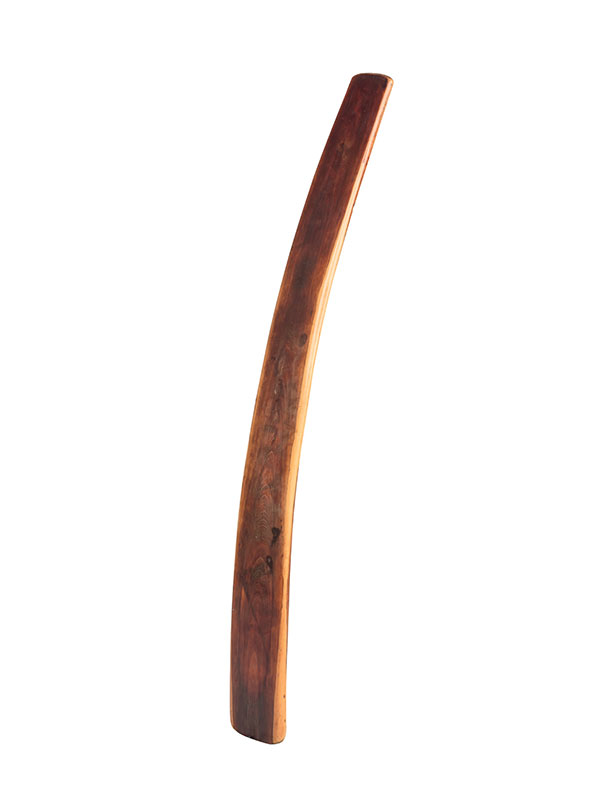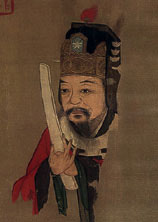Ivory court tablet, hu
An ivory court tablet of long, curved rectangular form. The tablet has a narrow upper end and a broader lower end. The lower end is square in shape, while the upper end is more rounded with slightly curved corners. The smoothly carved surface reveals the fine grain and vertical lines of the ivory. The hu has acquired a dark brown patina on both sides. The ivory tablet is lightly polished, resulting in a delicate sheen.
This beautifully patinated ivory hu tablet, also known as shouban (‘hand tablet’ in Chinese),[1] is of a type that was in use as early as the Tang period (618 – 906).[2] During the Ming period officials from the first to the fifth rank used ivory tablets on which to write notes during an audience with the Emperor.[3] The use of hu tablets was very much confined to the imperial grounds, since they were handed out to officials by designated doorkeepers upon entry into the palace and later collected for safekeeping.[4] A Ming dynasty painted portrait of Fan Zhongyan (989 – 1052), a prominent politician and literatus who lived in the Northern Song dynasty, illustrates vividly the use of the hu tablet (fig. 1).[5] Similar Ming dynasty ivory hu tablets are in the collection of the National Palace Museum, Taipei,[6] the Sir Victor Sassoon Chinese Ivories Trust,[7] and the Kwan collection.[8] The comparably small size of this ivory hu tablet suggest that it might have been made earlier than the 16th century, as sizes increased as the dynasty progressed.[9]
- Kao, Mayching, Chinese ivories from the Kwan Collection, Art Gallery of the Chinese University of Hong Kong, 1990, p. 210
- Clunas, C. Chinese Ivories from the Shang to the Qing, The Oriental Ceramic Society and The British Museum, British Museum Publications, 1984, p. 142
- Kao, Mayching, op cit. p. 210
- Clunas, C. op cit. p. 145
- The painting is in the collection of the Nanjing Museum
- The National Palace Museum, Taipei online collection archive, no. 贈雕199
- Clunas, C. op cit. no. 158, pp. 142-3
- Kao, Mayching, op cit. nos. 91 & 92, p. 210.
- Kao, Mayching, op cit. p. 210


